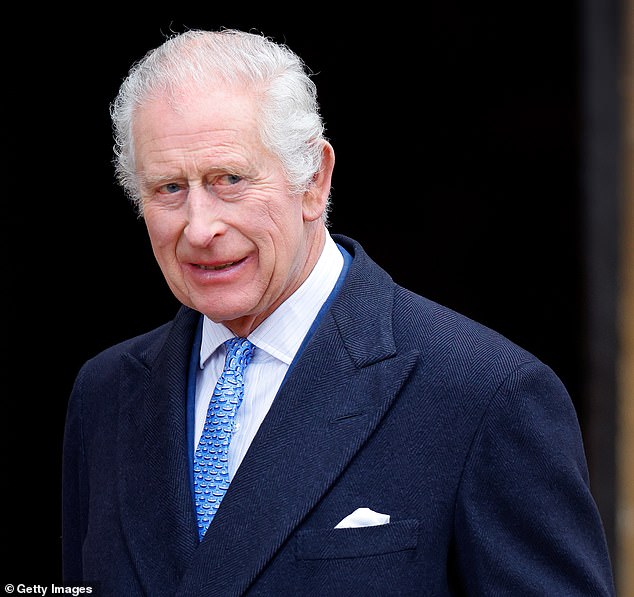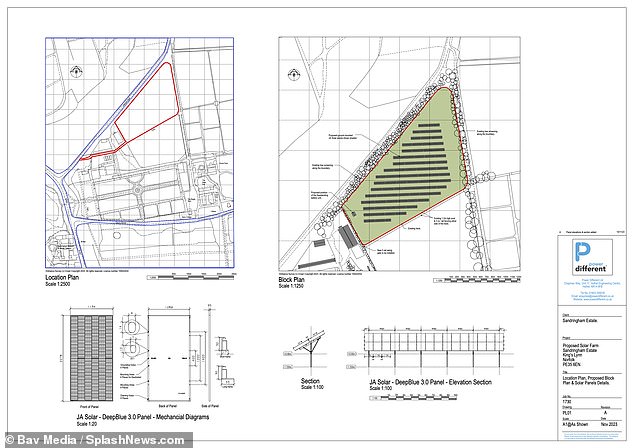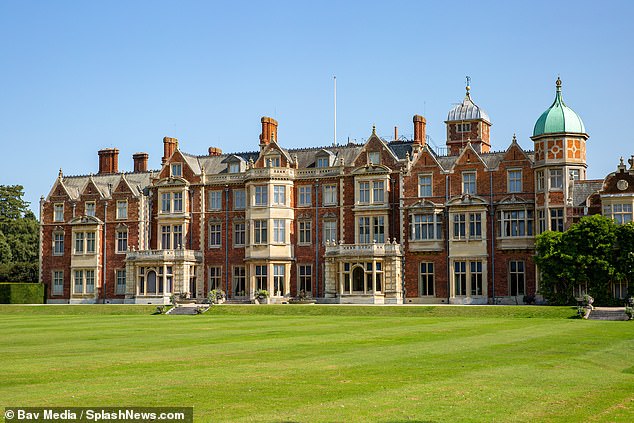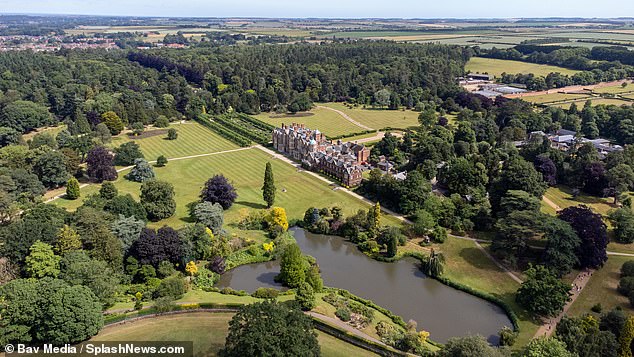Eco-warrior King Charles lodges plans for huge 2,000 panel solar farm in Norfolk to generate electricity for the Sandringham estate
Eco-warrior King Charles III plans to build a huge solar farm on his Royal Sandringham estate.
The monarch has applied for planning permission to install around 2,000 solar panels on horse paddocks to provide carbon-free energy for the 20,000 hectare estate.
Plans submitted to King’s Lynn and West Norfolk Council say the solar farm is designed to ‘meet the current and predicted future electricity needs of the Sandringham Estate’.
It comes after solar panels were installed on the roof of Sandringham House two years ago.
The solar panels, which will be installed across 2.3 hectares of land, will provide a total of 2.1 MW of energy, which will be used by the estate and a small amount of additional capacity will also be exported to the electricity grid.
King Charles plans to build a huge solar farm on a field (circled) on his Royal Sandringham estate

The monarch has applied for planning permission to install around 2,000 solar panels on horse paddocks to provide carbon-free energy for the 20,000 hectare estate.

Plans submitted to King’s Lynn and West Norfolk Council say the solar farm is designed to ‘meet the current and predicted future electricity needs of the Sandringham Estate’
The facility, which will mainly supply Sandringham House, the visitor center and sawmill, is expected to ‘have an operational life of 40 years’ and the field could then be used again for horse grazing.
The application states that the solar system is specified to provide 1.9 MW per year to ‘meet the majority of the estate’s electricity demand’.
It adds: ‘Power will be sent from the electricity system to the estate’s three main power consumers (Sawmill, Visitor Center and House) using the existing infrastructure which, as part of the project, will be upgraded/adapted as necessary .
‘The proposed development is part of the estate’s ongoing commitment to sustainability and promoting environmental practices and follows the installation of a small solar panel on the roof of Sandringham House in 2022.’
The grounds, currently used as pasture, are covered in grass and enclosed by tall trees along two of the boundaries, keeping the site hidden from the 500,000 tourists who visit the estate every year.

Two years ago, solar panels were installed on the roof of Sandringham House

The solar panels, which will be installed across 2.3 hectares of land, will provide a total of 2.1 MW of energy, which will be used by the estate and a small amount of additional capacity will also be exported to the electricity grid.
It is located north of Sandringham House on ‘operational’ land within the estate and is bounded by the working site and the Royal Stud.
The application stated: ‘The location of the proposed panels is visually constrained by existing buildings and mature vegetation, and the development would not result in the loss of productive agricultural land.’
It adds: The proposed range would help meet the estate’s energy needs in a sustainable and carbon neutral way.
‘The location is well shielded within the local and wider landscape, but still allows optimal panel orientation due to the more open southern border.’
The solar panels are made of tempered glass and mounted on a steel framework at an angle of 25 degrees, facing south. The application states that the highest part of the panel may not be higher than 3.1 meters.
The solar farm would also include a hybrid energy system, which would be located on the west side of the site and colored green to match the color of the nearby factory barns.
The application suggests that the solar farm would add value to the estate as a popular tourist destination, adding: ‘The well-protected nature of the site and the modest scale of the development means that the majority of these visitors would be unaware of the proposed solar panels. .
‘The estate may wish to publicize its journey away from carbon-based energy production, and in this sense the proposed solar development would add further value to the estate as a tourist destination.’
MailOnline has contacted Buckingham Palace for comment.
